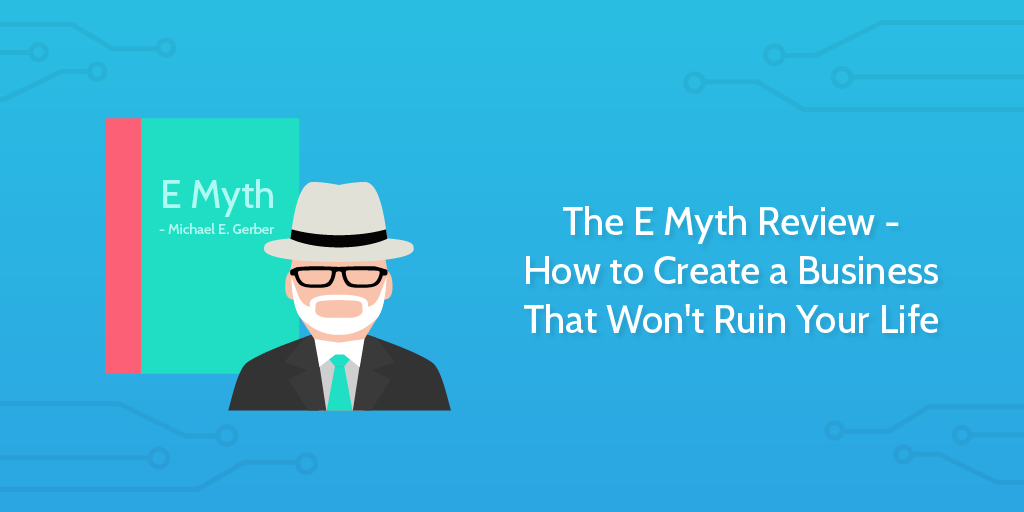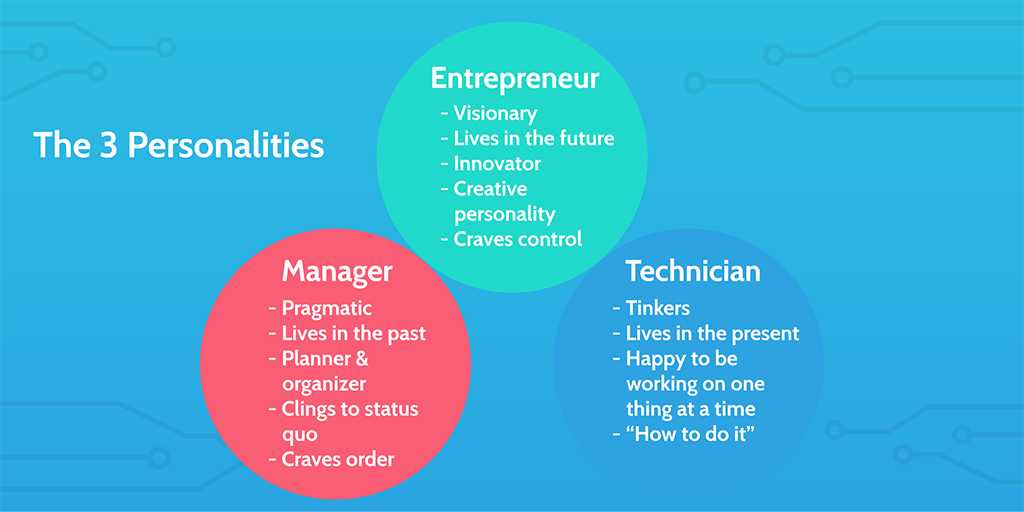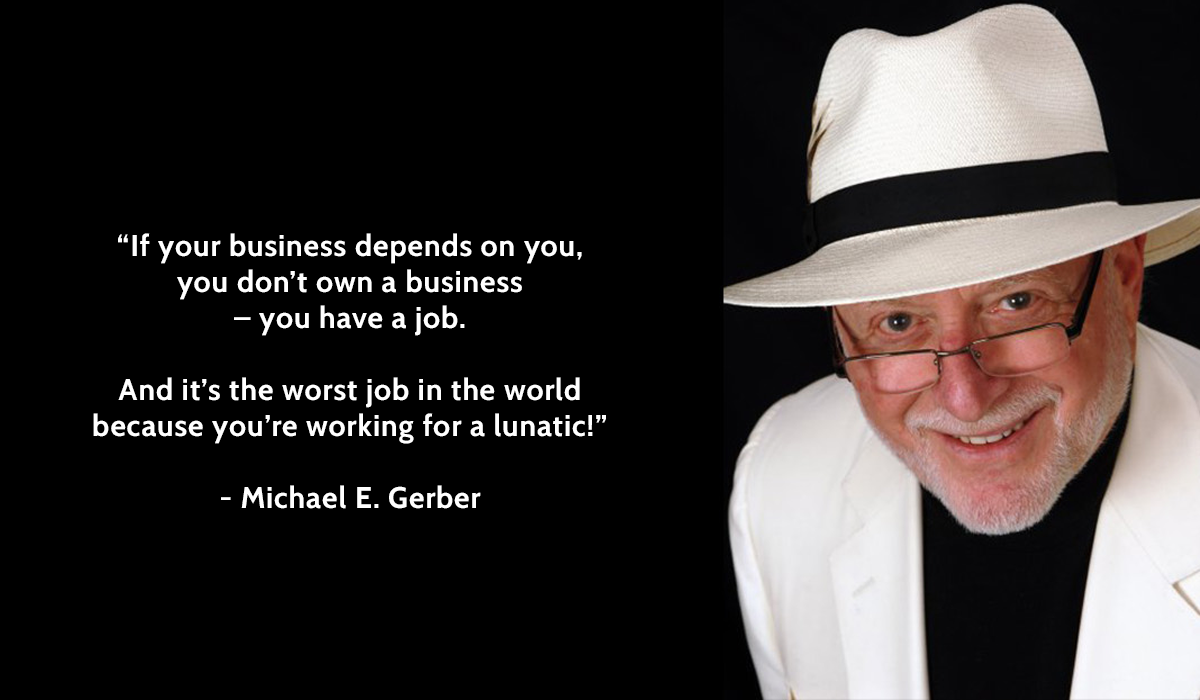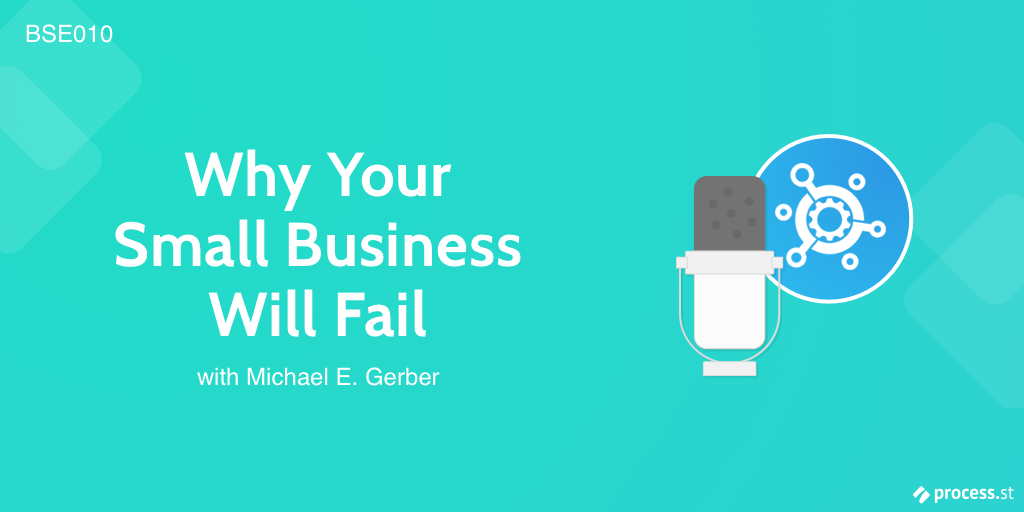
If all you want to know from this E Myth review is whether or not the book is worth reading, then go and buy a copy right now.
Michael Gerber passionately runs through the core reasons why so many small businesses fail from over 40 years of experience, and how to create a business that will be successful.
“Every year, over a million people in this country start a business of some sort… Within five years, more than 80 percent of them – 800,00 – will have failed.”
– Michael E. Gerber, The E Myth Revisited, p. 2
The book is a fascinating insight into the experience of Gerber dealing with not only failing businesses, but the people in charge of them who are often at their wit’s end. His drive to help them and satisfaction in seeing them blossom into true business owners is infectious, leaving you enthusiastic to start your own journey after every chapter.
It’s the same enthusiasm you can hear in Gerber’s voice when we interviewed him on Business Systems Explored to explore why small businesses fail.
If you’re running a small business that isn’t getting off the ground, want to know how to create a business that works, or have ever thought about how you could make a successful business to fuel your ideal lifestyle, then keep reading.
I’ll be covering seven core takeaways from Gerber in this E Myth review, namely:
- Balancing your business personalities
- Creating a business, not a job
- Working on your business, not in it
- Why your business needs systems
- The idea of your business being your product
- Motivating employees with the idea behind their work
- Make boring topics human to make them interesting
Let’s get right to it.
You need to balance your three personalities
According to Gerber, we all have three distinct personalities in us (at least in terms of work):
- The Entrepreneur (the innovator)
- The Manager (the organizer)
- The Technician (the worker)

The Entrepreneur lives in the future – they’re the dreamer who thinks of opportunities and “what-if”s. They give you the vision and spark to get started, but also often outpace your own motivation and progress. If the Entrepreneur is too strong in you, you’ll end up with hundreds of vague ideas, a few false starts, and ultimately no progress.
The Manager creates a stable status quo and maintains it. They order everything neatly and ensure that all has its place, from people and processes to tools and software. If the Manager is too strong, nothing will change, and thus nothing will get better.
The Technician is most common and is the doer. They care about getting work done and being busy, not necessarily what the work is going towards. Technicians have a to do list to follow, use the best productivity apps, and use business process automation to take care of menial tasks they don’t need to do. If the Technician is too strong, you’ll be left doing everything yourself in a business that’s little more than a trap.
Without the Entrepreneur your business will never change. Without the Manager you’ll have no idea what to do next. Without the Technician you might have a complete business plan, but you’ll never actually get started.
If you start a business with the goal of doing the same job you have right now, you’re starting from the Technician’s perspective. Your goals center around your work, rather than the opposite way around. To that end…
Create a business, not a job
Many businesses are started with one thought in mind – “I could do this better than them”. There’s nothing inherently wrong with that, but all too often it leads to the new business entirely depending on the person starting it.

They get stuck in and do the work because they know how to do it better without thinking about the big picture.
The Technician is going full steam while the Manager and Entrepreneur barely have room to breathe.
“If your business depends on you, you don’t own a business – you have a job. And it’s the worst job in the world because you’re working for a lunatic!”
– Michael E. Gerber, The E Myth Revisited, p. 40
The only way to avoid this when starting a business is to look at it from a completely different point of view. You need to decide on a goal (or lifestyle) to shoot for, because this vision will let you decide what kind of business you’ll need to achieve that.
Once you have that, you can let your Entrepreneur take over and run wild with ideas. Ideas that your Manager can organize and plan. Plans that your Technician can research and confirm the worth of.
In other words, you need to be creating your business long before you ever officially have a job in it.
Work on your business, not in it
When starting out with a small business, you probably won’t have enough employees to delegate the day-to-day running of the business. That’s fine, but you shouldn’t aim to always be doing that (again, that would just be creating a job for yourself).
Running a business means that you’re not primarily working inside it – you’re working on it.
Instead of just creating content, making dolls or baking pies, you’re shaping a structure which can be used no matter who is working at any stage of the business. You’re not just getting rid of your old boss; you’re becoming one by creating jobs for others.
You don’t create a business to have a job. Your job is to create the business.

I know I sound like a broken record, but it’s vital to understand this distinction. Rather than just doing the jobs your business needs, you need to be creating systems which allow it to reliably grow while remaining consistent.
To this end you need to know what business process management approach you’re going to take, and that you’ll have to start at the bottom. When you’re starting out you’ll inevitably have to do the heavy lifting yourself, but Gerber once again has an ingenious solution to making sure you don’t get bogged down too much.
While you may start out closing every sale and making every item yourself, you need to record exactly what you’re doing and how to do it. Test and record what you wear, how you talk, and so on, until you have a complete picture of the position you’ll then look to hire for. When you have someone to fill that space, give them the structure you’ve documented, move onto a different role, and repeat the same thing.
Not only do you need the best business process management software available, but you need to know how to create the systems which your business will run on. Speaking of which…
Systems are the lifeblood of your business
The only way to create a successful business is to have a repeatable, reliable business structure. The only way to do that is to create systems for everything you do.
We’ve talked before many times on why processes are important, from normalizing deviance to managing your business processes, but I’ll say it again here.
Bad or nonexistent systems are why small businesses fail.
With systems you can reliably recreate your successes and improve the way your business works. They allow you to track your performance and take into account the little things that can really make a difference in getting a sale.
Without systems and processes, you’re leaving everything to memory and chance. Not only that, but you’re making it impossible for anyone to take over the jobs you have to juggle when starting a new business. Or, rather, they might be able to take over the job, but they won’t be able to do it in the same way you did.
Gerber separates systems into three categories; Hard Systems, Soft Systems, and Information Systems.
Hard Systems are pretty much anything that isn’t alive or malleable, for example, the color of your office, the clothes you wear, and the computer you use. Having a set list of Hard Systems lets you consistently account for everything that makes up the image of your business (the physical and/or digital appearance) and the resources you and your team have access to.
Soft Systems are either ideas or living things. A selling process would be a soft system, as would an editing checklist. These are usually divided into Structure (what to do) and Substance (how to do it). In other words, these are the processes which tell your entire work force what tasks they need to complete and how to go about them. In Gerber’s words:
“… by [selling] the same way every time, you will not have a selling person but a selling system. A Soft System. A completely predictable technology for producing formerly unpredictable results.”
– Michael E. Gerber, The E Myth Revisited, p. 247
Finally, Information Systems are your method for tracking and managing the information your Soft Systems present. This information (if filed correctly) can then be used to show your business’ performance, give various benchmarks to set and achieve, and tell you what of your Hard and Soft Systems needs improving.
Defining and managing any of these three system types on their own will bring you massive benefits, but together you’re creating a well-oiled machine that can present whatever impression you choose to buyers and customers alike.
So, you’ve got the mindset and structure down, but now you need to learn exactly what it is you’re selling. (hint: it’s not your product).
You’re selling your business, not your product
Whether you want to eventually sell your business, franchise it, or just keep expanding, you should never assume that your product is your most valuable export.
To employees, customers, franchisees, investors, and buyers alike, your business is your product.
I might be combining a couple of Gerber’s points here, but the principle still stands.
“It isn’t the whiskey they choose, it’s the image. The brand image is 90 per cent of what the distiller has to sell… They are tasting images.”
– David Ogilvy, Ogilvy On Advertising

For franchisees, investors, and potential buyers, you need to have created a business that works, since your business is literally your product to them. They don’t care so much about the precise toy or toolkit you’re making, but instead how reliable and effective your business model is.
To them, you’re selling your business as a money machine.
Customers are still being sold your business, but for them it is more heavily linked to your product. They could buy what you have to offer from most anywhere (in principle), and so you need to be selling them something beyond the thing they’re physically buying.
McDonald’s isn’t successful because they sell hamburgers; it’s because that business is molded around being cheap, convenient, and of a consistently good quality. They’ve proved this through every aspect of their business from the pricing, to wait times, to the locations they choose.
Customers buy your product, but they’re sold on your business.
Finally, employees are what makes your business tick. With such a heavy focus on your business model and systems (which we’ll get to later), you can’t just hire someone because their skill set matches the job description. They need to be sold on your business more than anyone else, since these are your front line against failure.
If you can’t sell your business to your employees, then they won’t work to sell it to everyone else.
Exactly how you go about selling your business to your employees is a topic unto itself (specifically employee engagement), but Gerber identifies one key principle to follow when getting started; that the work itself doesn’t matter so much as the idea behind the work.
Let me explain.
Everyone must understand the idea behind their work
“… there was an idea behind the work that was more important than the work itself.”
– an unnamed hotel manager, The E Myth Revisited, p. 201
This snippet comes from Gerber trying to find out how a hotel he’d returned to for seventeen years managed to get their staff to stick to their rigorous processes. Every time Gerber visited they remembered who he was, what coffee he liked, when he liked his fire to be lit, and what paper he read – the processes were sound, but the employees’ dedication made it work.
The smile of the receptionist, the inviting manner of the manager, the care and priority given by the restaurant staff, they all created a lasting impression on Gerber to the point where he would return year after year.
Their secret, as the manager is quoted as saying above, is that they sold their employees on the idea behind their tasks. Doing this can allow your team to power through (yet take care) every task they have on their to do list, no matter how much they would otherwise hate it.
Money is a decent motivator, but knowing “I’m getting paid for this” isn’t enough to encourage them to put themselves into their tasks, taking the same level of time, effort, and care in everything they do. To do that, they need a reason to care.
They need to see the idea behind their work. The greater purpose they are helping to achieve.
Gerber (or rather, the manager he’s talking to) poses this as part of the “game” that your employees need to buy into in order to be fully engaged with the tasks they do. Your systems provide the rules, but your idea presents their goal. If they buy into that goal and take the game seriously, the reward of improving their own performance is often rewarding in itself.
Team building activities are fantastic for getting your team interacting with each other, but to motivate them individually they need to relate to that higher purpose.
Washing windows by itself is a job. See the purpose and practice a consistently improving method, and suddenly you have a performance.

Make your topic human to be interesting
My final lesson from the E Myth Revisited isn’t specifically about running a small business. It’s not even that new – I already knew the concept, but I didn’t have the principle in words, so here goes.
Processes are boring.
Really boring.
However, Gerber’s book is a blast to read because he makes the whole thing interesting. He does this by making his boring topic human.
He poses almost the entire book as a conversation had with Sarah, who started a business baking pies three years prior to meeting him. After completely burning out from doing everything herself, she asked Gerber to help her turn her business around.

From that point onwards, Gerber uses her story as a vessel to teach the audience about the ins and outs of creating a small business, the mindset and systems required, and more. For the majority of the book Gerber talks directly both to the reader and Sarah, who herself stops to ask questions which many (myself included) would also like to ask when hearing this.
By returning to the conversation with Sarah almost every chapter we’re given a point to anchor ourselves and understand the stakes involved. If this theory doesn’t work, both Sarah and the core target audience of the book (small business owners looking to make their business work) are left stranded.
A boring topic becomes interesting because Gerber makes it human.
We’ve been doing this on the Process Street blog for a while without stopping to think, but it’s nonetheless surprising to see it so effectively in action. For example, I could have written a dry post about creating an operations manual, but instead I made the importance of the post clear by highlighting what human error can do.
Manuals can be boring. Mutually Assured Destruction? Not so much.
The lessons from this E Myth review can be applied to any business
Gerber (and his companies) have spent more than 40 years helping small businesses to fix their business model and achieve success, but that doesn’t mean that the tips shown in this E Myth review can only be applied to a certain size or sector. Any business that is looking to improve its business model can take the principles behind these lessons and use them to achieve success.
It all centers around your primary aim. So long as you have a lifestyle in mind, you can create or change your business to suit that while also creating one which doesn’t chain you down.
Your business doesn’t have to be your life, so why not take back control yourself?
Have you started your own business? What problems have you found the most challenging? I’d love to hear from you in the comments!







 Workflows
Workflows Forms
Forms Data Sets
Data Sets Pages
Pages Process AI
Process AI Automations
Automations Analytics
Analytics Apps
Apps Integrations
Integrations
 Property management
Property management
 Human resources
Human resources
 Customer management
Customer management
 Information technology
Information technology





Ben Mulholland
Ben Mulholland is an Editor at Process Street, and winds down with a casual article or two on Mulholland Writing. Find him on Twitter here.